After taking a beating from the Minnesota Vikings in Week 2 of the 2021 NFL season, the Arizona Cardinals looked destined for a “good offense, bad defense” season.
Over the past three weeks, though, the Cardinals have fielded the best-ranked defense in the NFL, per expected points added (EPA) allowed per play. That string of performances now has the defense at second overall in the metric over the course of the season, and the team is poised to contend for the NFC West title and the outright crown atop the conference.
Click here for more PFF tools:
Rankings & Projections | WR/CB Matchup Chart | NFL & NCAA Betting Dashboards | NFL Player Props tool | NFL & NCAA Power Rankings
Still, watching the Cardinals' defense does not feel like watching a league-leading performance. What I’ve been more drawn to believe is that Arizona is playing a style of boom-or-bust defense at a level that defies any and all conception of sustainability in sports.
While defensive coordinator Vance Joseph’s unit has thrived by playing defense based on vibes, it’s important to dig into the data to find what is and isn’t threatened by violent regression, before anyone can be comfortable declaring this team a contender.
Run Defense
| Team | Run-Defense Grade | Defensive Stops | Tackles For Loss + No Gain | Average Depth of Tackle |
| Arizona Cardinals | 45.5 (29th) | 82 (22nd) | 33 (T-3rd) | 4.53 (27th) |
The center of what makes this defense as confounding as it's been is rooted in run defense, and the data provides evidence that Arizona is selling out to create negative plays (and not much else).
As a single-high safety defense — 106 of 146 run snaps have been with one deep safety — the philosophy lends itself to making more plays at or near the line of scrimmage. The Cardinals ranking in the top five in tackles for loss is something I can conceptualize within the structure of the defense.
However, ranking bottom 10 in the NFL in defensive stops (a metric used to gauge whether the defense “won” the play based on game situation) and giving up almost half a first down’s worth of yardage on average doesn’t mesh neatly with the tackle-for-loss numbers.
The film supports the data, often finding Vance Joseph’s defense loading the box and taking chances with run blitzes. Watching the film without the context of game flow and situation would lead one to believe that the Cardinals are perpetually caught in a “four-minute drill” where they’re destined to lose if they don’t get the football back immediately.
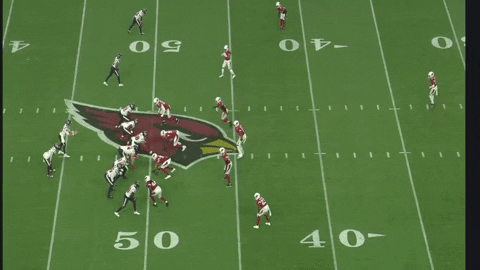
On the sparse reps in which Arizona isn’t playing with a single-high safety, you’ll see linebackers and defensive backs firing from all over the place, selling out to get to the running back before he can get to the line of scrimmage.

I wrote about it earlier in the season, and it’s still evident at this stage of the season — the Cardinals are just attacking. It’s not readily apparent why linebackers flow the way they do, why blitzes are being called from whichever direction or what the run support structure is behind to protect the box (if there’s any at all).
What is obvious to PFF’s data and my eyes: If the blitzes don’t get home, this defense doesn’t have a prayer of stopping ball carriers from gashing them. Four of the seven teams Arizona has faced this season have averaged over five yards per carry, and Houston is the only squad to average less than 3.8. If you can weather the storm of a few tackles for loss throughout a game, there will be opportunities for explosive gains.
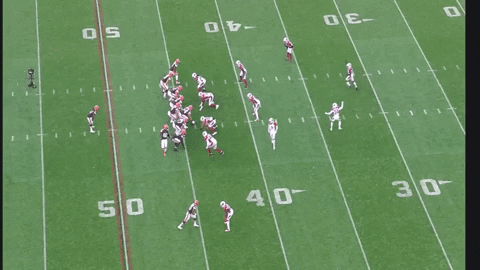
This is one of the few defenses, because of the style of play, that is hard to judge by much other than the result. The run fits aren’t always sound because they're not always meant to be. Edge defenders slant into interior gaps, linebackers go screaming over the top of runs and safeties come flying out of the roof. It’s jarring, particularly in an era of defenses playing with more two-high safety shells and giving up moderate gains to protect against explosive plays.
Lucky for this defense, quarterback Kyler Murray and the offense have bought enough margin for error to protect against exposure. The data suggests a major area of potential stress, and something more offenses can lean into attacking. This is an area where regression or sustainability isn’t a concern because the defense is already bad at it and doing whatever it can to patch up the issues.
| Player | Run-Defense Snaps | Run-Defense Grade | % of Plays with a Positive Grade |
| J.J. Watt | 114 | 62.3 | 30% |
| Zaven Collins | 66 | 77.1 | 24% |
| Isaiah Simmons | 129 | 48.9 | 13% |
| Devon Kennard | 48 | 74.1 | 22% |
| Buddha Baker | 141 | 68.6 | 10% |
Pass Rush
| Team | Pass-Rush Grade | Pressures | Unblocked Pressures | Sacks | Blitz Rate |
| Arizona Cardinals | 80.1 (2nd) | 111 (14th) | 23 (T-10th) | 17 (T-8th) | 34% (5th) |
The aggressive approach isn’t only reserved for turning first-and-10 into second-and-12 in the run game. Arizona sells out to affect the quarterback instead of sitting back and hoping for tight coverage on every route.
To me, for a defense that blitzes at the rate Arizona does — on more than one-third of all passes — the most telling statistic is whether the unit can generate unblocked rushers. The Cardinals rank top 10 in unblocked pressure when considering all pass-rush snaps, but they drop to 12th when filtering out non-blitzing pass-rush reps.
A portrait is painted of a pass-rush package that weaponizes the threat of pressure to bend pass protection schemes into releasing defenders unabated to the quarterback.
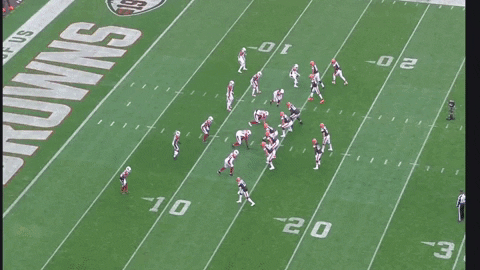
Arizona loves to send more players than an offensive line and running back can account for, another facet of defense that you don’t see much of any longer — and for good reason. At this point in the season, only the Baltimore Ravens and Kansas City Chiefs have run more snaps of Cover 0 than Arizona. It’s a high level of investment, but it can set up counterpunches later.

Not only can you mix up the coverage shell behind some of these six-down pressure presentations, but Arizona is using one of my favorite wrinkles to manufacture pressure: picking the tackle with the end and rushing a blitzer off the edge. Many of the modern pressure schemes are precision strikes, hoping to run someone through an interior gap. By picking the tackle the way Arizona does, a defense is manufacturing pressure without investing as much in manipulating protection rules.
Arizona plays the same game of roulette with attacking quarterbacks as it does with hunting tackles for loss, but the design isn’t unsound to the point of unsustainability. I’d expect the defense to find positive returns throughout the season.
Coverage
| Coverage Scheme (no blitzes) | Coverage Snaps | Coverage Grade | Passer Rating Allowed | Yards Per Reception Allowed |
| Cover 3 | 36 | 71.1 | 125.1 | 10.3 |
| Cover 2 | 31 | 84.8 | 57.6 | 7.3 |
| Cover 1 | 27 | 59.4 | 104.4 | 13.2 |
| Quarters | 22 | 68.9 | 52.5 | 10.6 |
For a team that blitzes as often as Arizona has in 2021, there’s a reasonable assumption to be made that it’s most vulnerable at holding up in its base defense — rushing with just three or four defenders.
Through seven weeks, all data points to the contrary. When Arizona is in its base coverage looks, it’s been near the top of all performance metrics — if not the best outright.
There’s some luck involved: Turnover performance fluctuates wildly on a game-to-game basis, and the defense ranks in the top 10 of the most dropped passes and off-target throws faced when rushing three or four players. But, the metrics I’m most interested in is where Arizona performs best: explosive passes, first downs, touchdowns and open targets allowed.
| Team | Coverage Grade | Open Target % | % of 15+ Yard Gains Allowed | % of 1st Downs or TDs Allowed | INT Rate |
| Arizona Cardinals | 85.9 (2nd) | 43% (2nd) | 8% (2nd) | 32% (1st) | 4% (T-4th) |
This, in tandem with the 63/53 coverage snap split in its top single-high and split-safety base looks, tells me that Arizona has married its scheme to some of the twitchy athletes it has on the second and third levels to eliminate both easy and explosive throws.
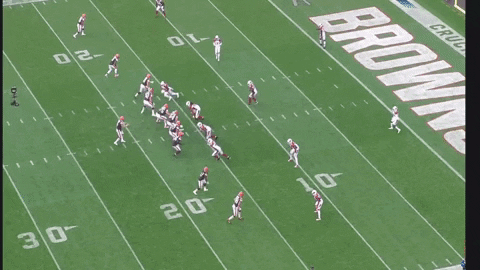
The Cover 2 scheme Arizona employs is one of my favorites in the NFL. Dropping an interior defensive lineman into the “low hole” isn’t the most sound allocation of defensive resources, but the reasoning behind it is sound. It provides relief for the middle linebacker dropping into the deep hole for the crossing routes we see from every NFL offense. The Cardinals haven’t allowed a single gain of 15-plus yards in coverage in Cover 2, and only 21% of receptions have resulted in first downs or touchdowns.
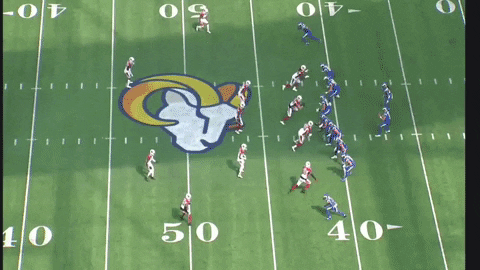
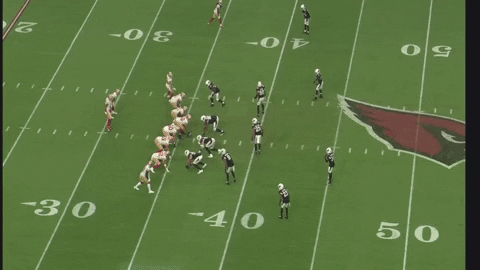
Quarters has been a useful base coverage for Arizona against offenses that like to condense wide receiver splits because of the multiplicity a defense can have in distributing the route combinations. Against crossing routes, safeties can drive down to “rob” the area quarterbacks anticipate throwing into. When crossers don’t come and offenses look to push the ball vertically, safeties can bracket the deepest route with the corner.
Arizona may exist along some extreme margins when it comes to fitting the run, and the way the defense blitzes is a high investment in forcing unblocked pressure. But the way the defense plays the pass in base looks suggests that there may be legitimate methods for Vance Joseph's madness. In an NFL world where teams are trying to get into odd fronts and/or play with two-high safeties, conceding is a term you’ll hear at times.
In Arizona, though, the defense is attacking everything. And, if this stretch continues, Joseph’s approach can end up in the discussion of modern defense beside the other best and brightest minds in the NFL.
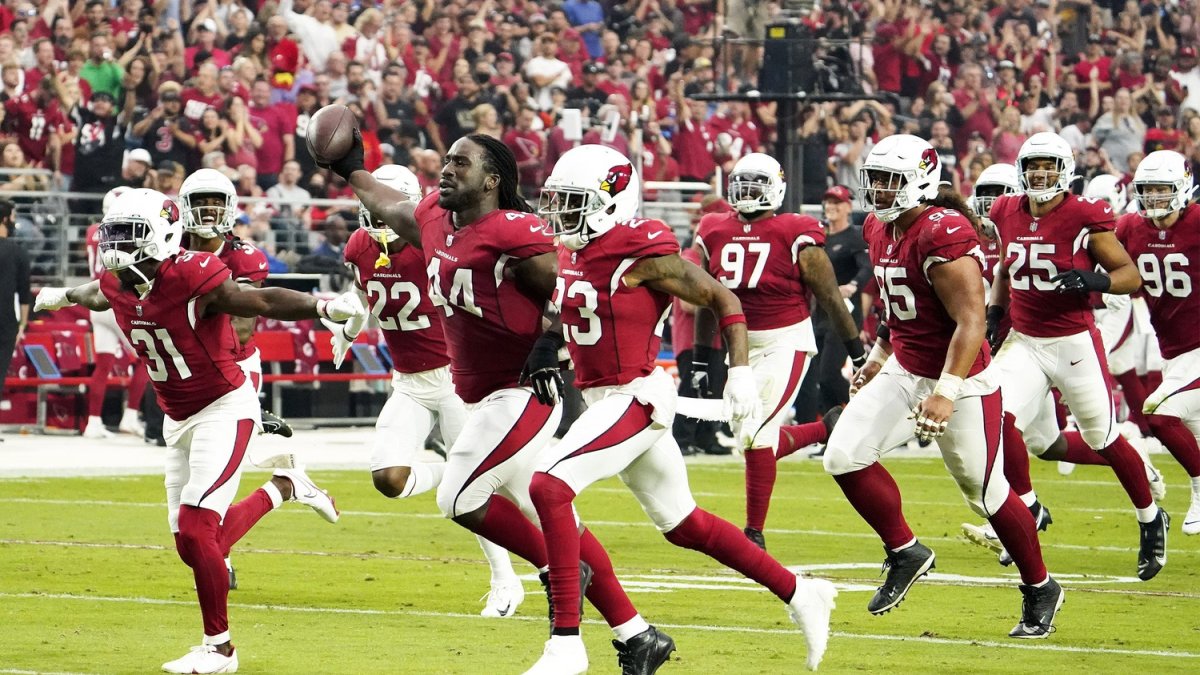


 © 2025 PFF - all rights reserved.
© 2025 PFF - all rights reserved.